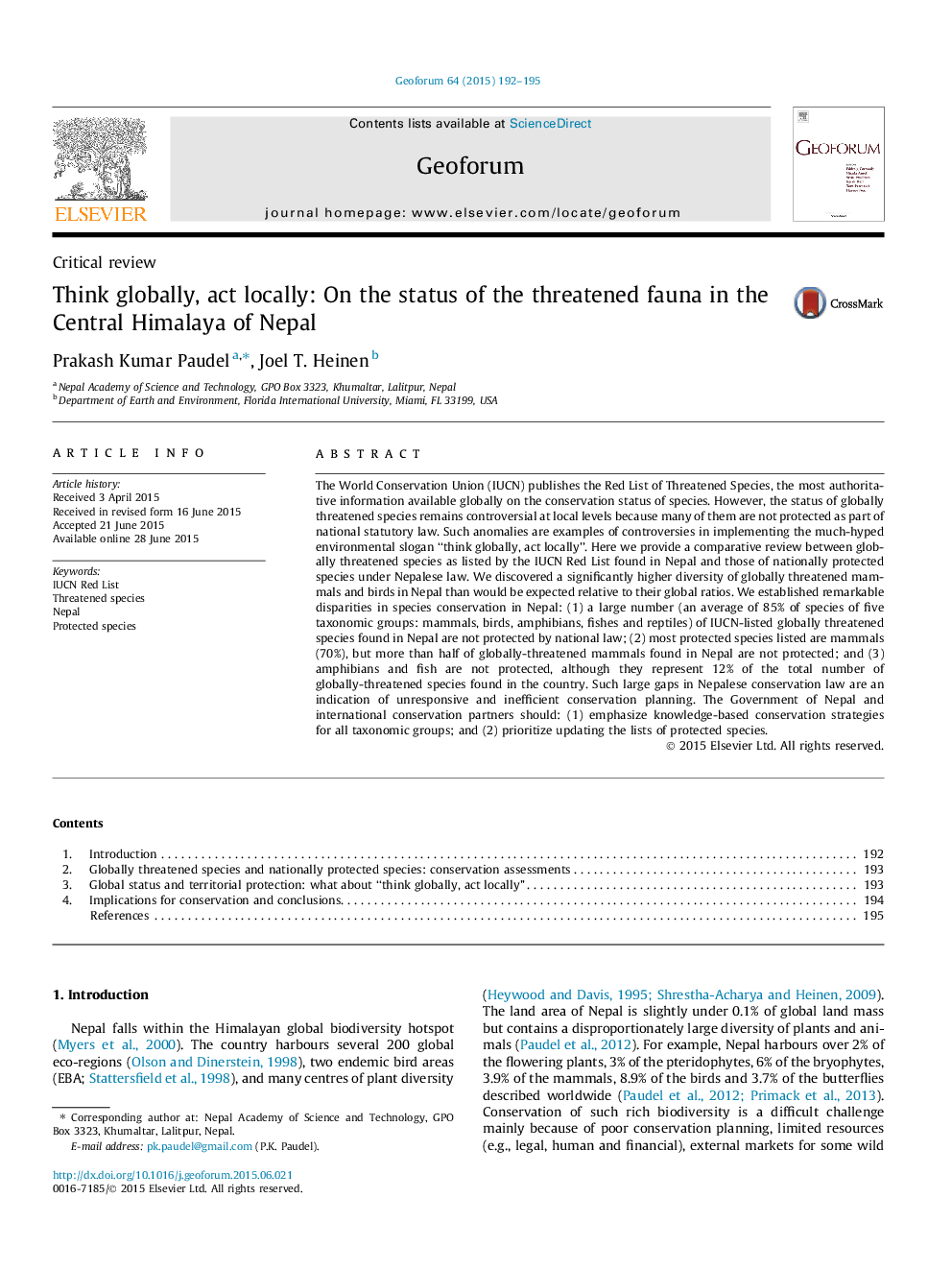| Article ID | Journal | Published Year | Pages | File Type |
|---|---|---|---|---|
| 5073686 | Geoforum | 2015 | 4 Pages |
The World Conservation Union (IUCN) publishes the Red List of Threatened Species, the most authoritative information available globally on the conservation status of species. However, the status of globally threatened species remains controversial at local levels because many of them are not protected as part of national statutory law. Such anomalies are examples of controversies in implementing the much-hyped environmental slogan “think globally, act locally”. Here we provide a comparative review between globally threatened species as listed by the IUCN Red List found in Nepal and those of nationally protected species under Nepalese law. We discovered a significantly higher diversity of globally threatened mammals and birds in Nepal than would be expected relative to their global ratios. We established remarkable disparities in species conservation in Nepal: (1) a large number (an average of 85% of species of five taxonomic groups: mammals, birds, amphibians, fishes and reptiles) of IUCN-listed globally threatened species found in Nepal are not protected by national law; (2) most protected species listed are mammals (70%), but more than half of globally-threatened mammals found in Nepal are not protected; and (3) amphibians and fish are not protected, although they represent 12% of the total number of globally-threatened species found in the country. Such large gaps in Nepalese conservation law are an indication of unresponsive and inefficient conservation planning. The Government of Nepal and international conservation partners should: (1) emphasize knowledge-based conservation strategies for all taxonomic groups; and (2) prioritize updating the lists of protected species.
